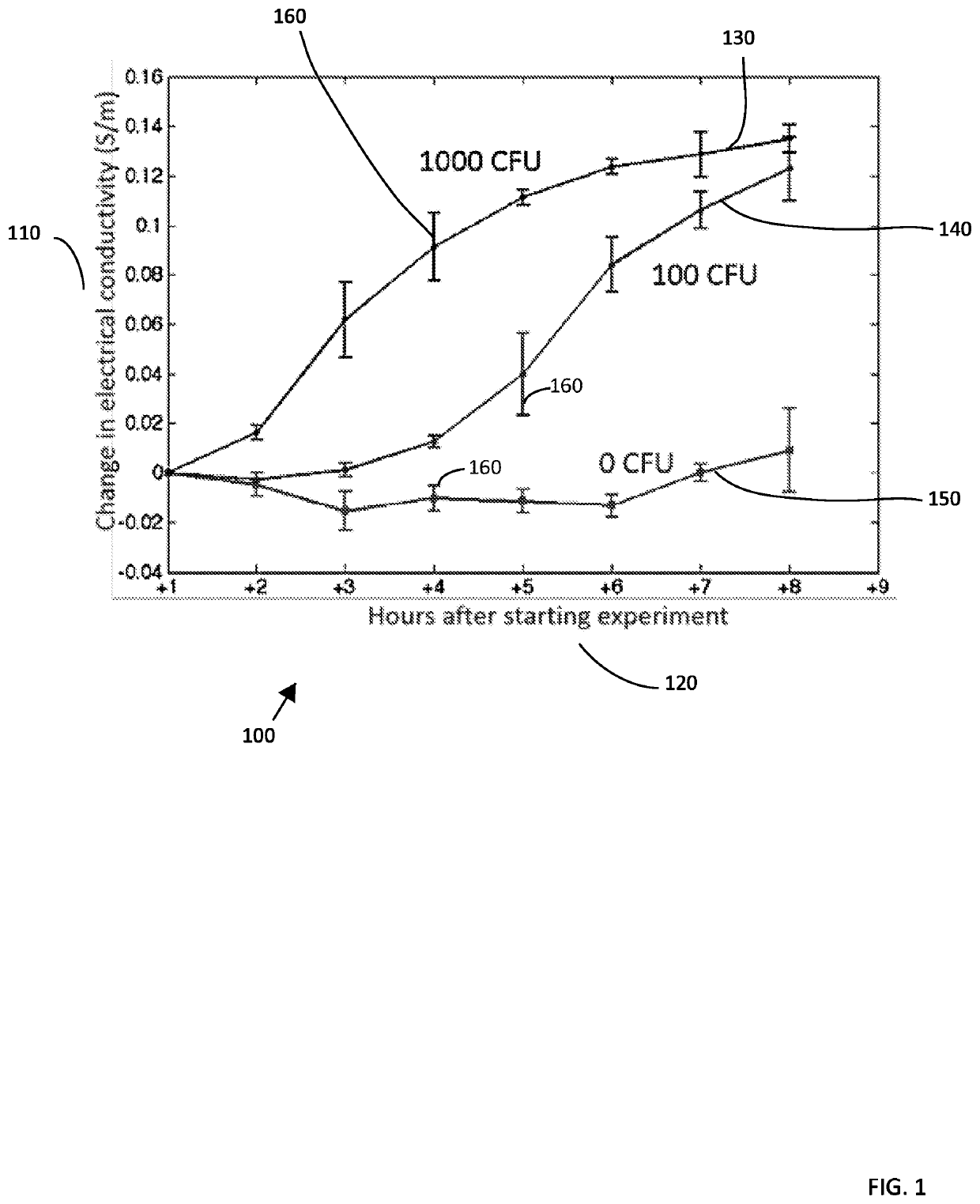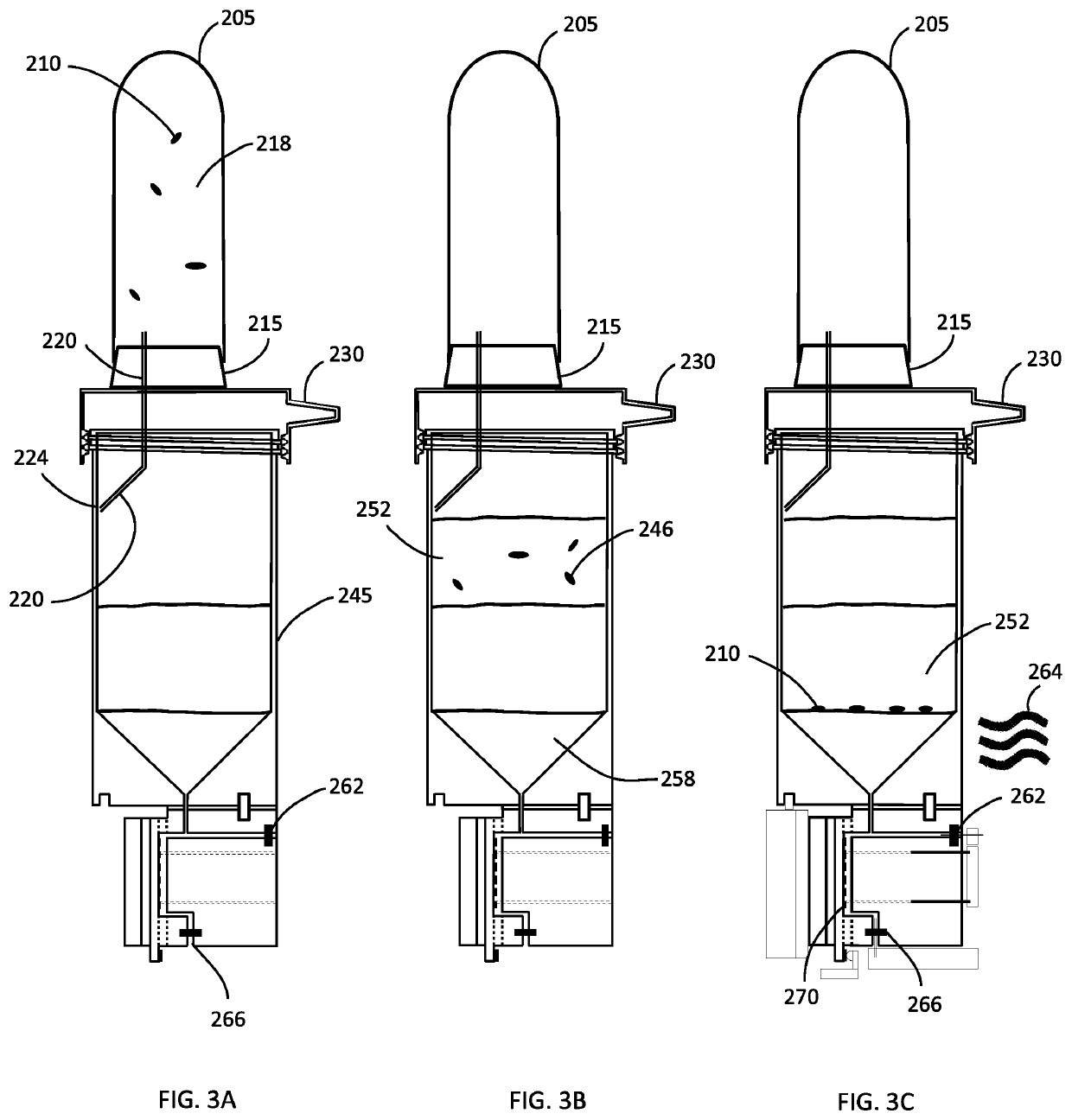Method and Apparatus for Isolating and Detecting Biological and Other Particles
a biological and other particle technology, applied in the field of biological particle isolating and detecting devices, can solve the problems of ineffective cyto-centrifuges, inability to exclude the presence of organisms not targeted, inappropriate anti-microbial therapy, etc., to accelerate the turn-around time of microbiology laboratories, reduce the risk of cross contamination, and be ergonomically convenient
- Summary
- Abstract
- Description
- Claims
- Application Information
AI Technical Summary
Benefits of technology
Problems solved by technology
Method used
Image
Examples
example 1
[0106]Firstly, the use of a density gradient medium as a barrier to the ions in the original sample was tested and shown to work successfully. Briefly, a substance called OptiPrep is created, which is about 60% iodixanol, was diluted with 5% D-mannitol to create a solution having a physical density of 1080 kg / m3. About 500 microliters of this density gradient medium (OptiPrep) is placed in a 2 mL centrifuge tube. Then, about 500 microliters of whole blood, previously treated with saponin (final concentration of saponin was ˜5 mg / mL), is spiked with bacteria (Enteroccocus faecalis) and is carefully layered on top of the density gradient medium using a pipettor equipped with a wide-bore pipette tip, so as to not disturb the heavier bottom fluid layer and cause mixing of the sample and that layer. The tube containing the sample and the separation density medium is then centrifuged at 8,000 RPM for 15 minutes using a standard bench top centrifuge having a rotor diameter of about 20 cm. ...
example 2
[0108]In another set of experiments, one mL of blood is placed above one mL of the density gradient medium. In this separate experiment, a larger volume allows for the electrical conductivity of the density gradient medium to be measured off-line using a flow-through probe and a bench-top conductivity meter. In three separate experiments, the highest conductivity value measured was 62.5 mS / m, which is about 24× lower than the electrical conductivity of whole blood (˜1.5 S / m). The density gradient not only presents the migration of some biological particles to the bottom of the device while still allowing sufficiently dense particles to be transported through the density medium, it also provides a barrier to the diffusion of ions from the sample into lower fluid layers.
example 3
[0109]In yet another set of experiments, a small hole was bored in the bottom of the centrifuge tube and a rubber septum having dimensions of 11 mm in diameter and about 3 mm in thickness was positioned at the bottom of the centrifuge tube. This allowed the operator to access the bottom layer without disturbing the sample and the fluid interface between the density gradient medium and the sample when extracting a sub-sample from the density gradient medium. To test this device, E. coli was grown overnight in lysogeny broth, and 100 microliters of the culture was harvested and layered on top of a density gradient medium. The gradient medium was made by mixing Optiprep and a mannitol solution to adjust the density to approximately 1080 kg / m3. After centrifuging the tube at 10,000 RPM for 10 minutes, the sample liquid appeared clarified, and a pellet formed along the surface of the septum. A needle was used to puncture the septum the plunger was withdrawn and depressed repeatedly to re...
PUM
 Login to View More
Login to View More Abstract
Description
Claims
Application Information
 Login to View More
Login to View More - R&D
- Intellectual Property
- Life Sciences
- Materials
- Tech Scout
- Unparalleled Data Quality
- Higher Quality Content
- 60% Fewer Hallucinations
Browse by: Latest US Patents, China's latest patents, Technical Efficacy Thesaurus, Application Domain, Technology Topic, Popular Technical Reports.
© 2025 PatSnap. All rights reserved.Legal|Privacy policy|Modern Slavery Act Transparency Statement|Sitemap|About US| Contact US: help@patsnap.com



